
Why Do Yachts Have Black Sails? [The Reason Explained]
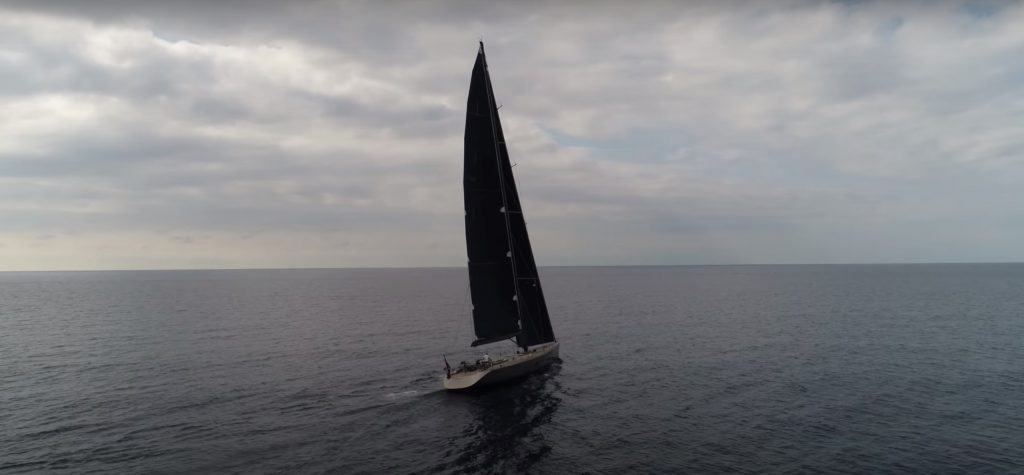
One of the joys of owning a yacht is that you get to customize that baby like nobody’s business. That’s why no two yachts ever look the same, even if they’re exactly the same make and model. From the upholstery, to the console, the decking, and of course the body paint, you can do pretty much anything you want with a yacht. Oh, except for the sails.
If you’ve been hanging around yachts enough, you might have noticed that all of them have black sails. What gives? Is this some unspoken yacht owner pact? Or is it all just a grand coincidence? Why do yachts have black sails? Here’s what you need to know.
Why Do Yachts Have Black Sails?
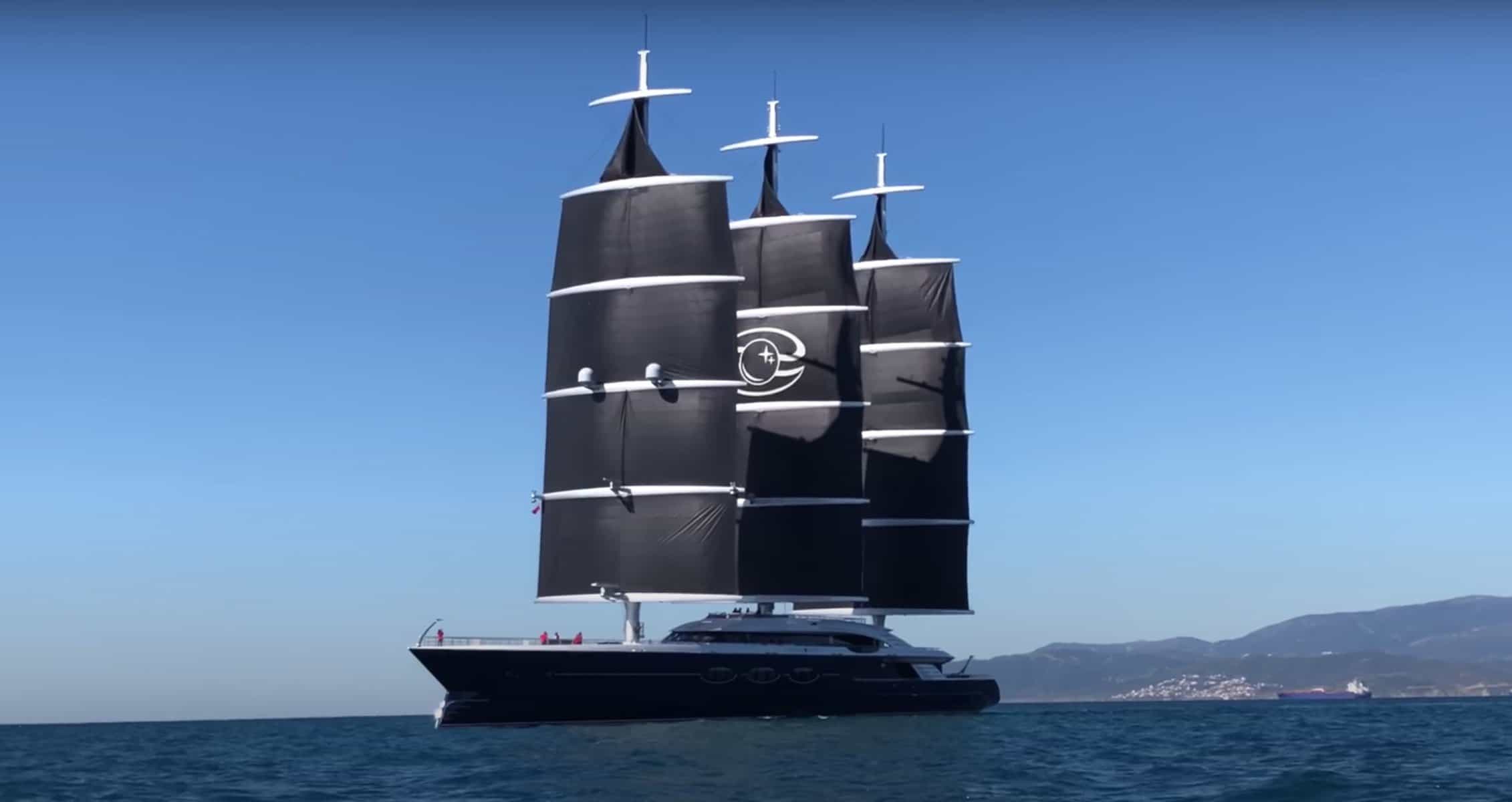
Unbeknownst to most people, yacht sails actually have a long history of design changes and modifications. Way back when, sails were made from cotton and came in a variety of colors, but often just a basic beige.
As time went on and manufacturers discovered better ways to make sails more efficient, they tossed out the cotton in favor of Kevlar. This material had Kevlar lines woven right into them which gave the sails better strength against strong winds. This also gave the sails a yellow tinge.
Fast forward a few years, and carbon fiber became the standard for yacht sails. They provided excellent resilience, UV resistance, and just the right flexibility to accommodate changes in wind strength and speed. And while they can come in different colors, most manufacturers offer them in plain black since they’re easier to manufacture that way.
Well, that covers pretty much the basics. But if you really want to get into it, then here are some of the most common reasons why yachts have black sails:
It’s What’s Available
Manufacturers for yacht sails compete closely with one another. So whatever sails one of them offers will be the same sails that others do. And since carbon fiber sails are pretty much the standard these days, that’s what all of them have in stock.
Keep in mind that they don’t really choose to make them black. It’s just that the material is naturally black because of the carbon. These fibers are weaved into the material which is basically layers of polyester that are naturally transparent.
Can they make them in other colors? Probably. But since black has become the standard, it seems they’re not really keen on mixing up the look. What’s more, making an effort to change the colors might mean having to add other materials into the mix, changing the way the sail performs all together.
It’s the Standard
The black color has become strongly associated with performance sails. It’s kind of like the marker of a quality sail. Yacht owners and even regular boat enthusiasts know that a black sail is the standard of top performance because it’s made from premium materials.
That said, changing the color might distance the product from that image. And since manufacturers don’t want to dissociate from being ‘top quality’ brands, there’s really no reason to try to change things up by offering other sail colors that might not be recognized as top tier.
It’s Sleek and Aesthetically Pleasing
Let’s be honest -- a black sail definitely adds a sporty look to a yacht. These high performance sails are intended to make your yacht operate optimally even in the face of strong winds and waves. And to match this competitive performance, they offer a distinct, athletic look.
No doubt, going for a spin in a yacht with black sails can make your vessel look like a true-blue, competition worthy boat. In fact, most boats that use these black carbon fiber sails actually compete in various water sports and racing events, which has associated the black color with supreme performance.
It’s a Mark of Quality
If you’re familiar with black sails for yachts, then you know from just a glance that these dark sails are the mark of quality. Actually anyone who wants to get a quality sail for their yacht will likely go for the black ones first since they’re developed for optimal performance in various wind conditions.
In essence, a black sail is like a seal of quality and durability. So if you want to showcase your yacht and demonstrate your superiority without having to say a word, all you really need is a black sail.
Are There Other Colors for Yacht Sails?
Absolutely -- sails still come in a variety of colors. In fact, you can get them in virtually any color you want. The trade-off though is that you probably won’t find carbon fiber sails in any other color but a dark gray or black. But that’s okay especially if you’re not really interested in using your boat competitively.
Unless you’re into competitive sailing or racing, you probably won’t need a carbon fiber sail. There are lots of other sails on the market that use various other materials, like Dacron sails which are still in use today. These were popular before Kevlar, but still find their place on the market because of their so-so performance and affordable prices.
Keep in mind though that when you buy a sail just to change up the color, you also sacrifice the durability and performance of the sail. As of writing, there is no other type of material that matches the level of performance, resilience, and quality of carbon fiber sails . So naturally, sails that come in other colors (and thus use different materials) will likely produce substandard performance.
Once You Go Black
So, why do yachts have black sails? It’s really a matter of material. Carbon fiber sails are all the rage these days for boat owners who want to get the best performance out of their yacht. But that doesn’t mean you can’t get a sail in a different color. There are lots of sails available on the market -- many of them offered in a variety of hues. Just remember that if they’re not carbon-fiber, they may not be as reliable as performance grade sails.
Related Posts

Why are Superyachts So Expensive? [The Costs Explained]
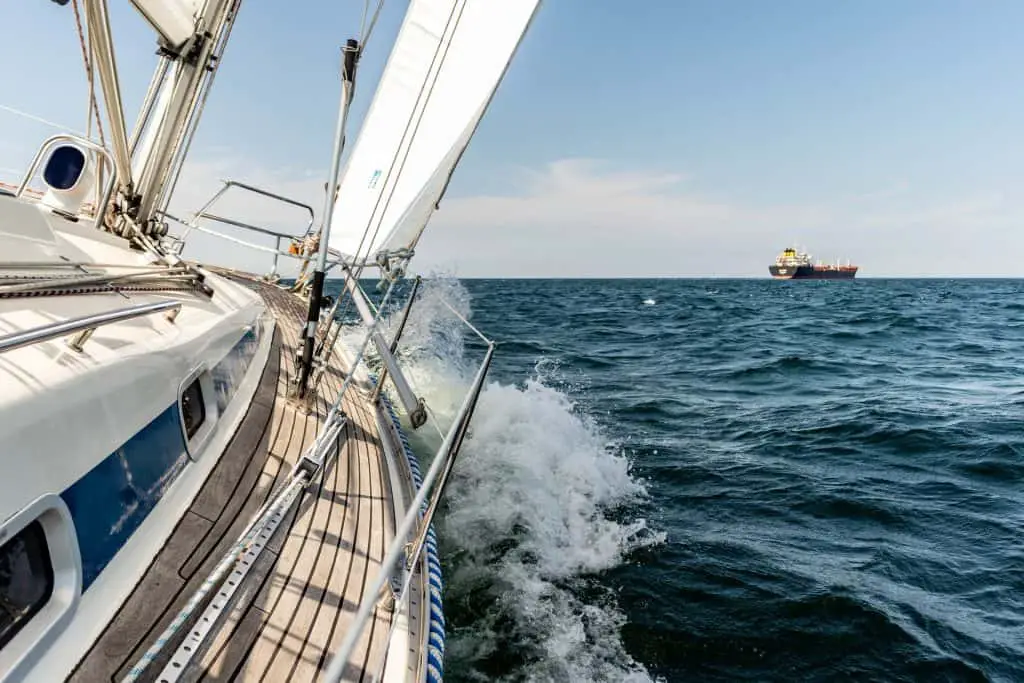
How Long Does It Take to Learn to Sail a Yacht? (How to sail)

Why Do Yachts Have Two Steering Wheels? (The Reasons)
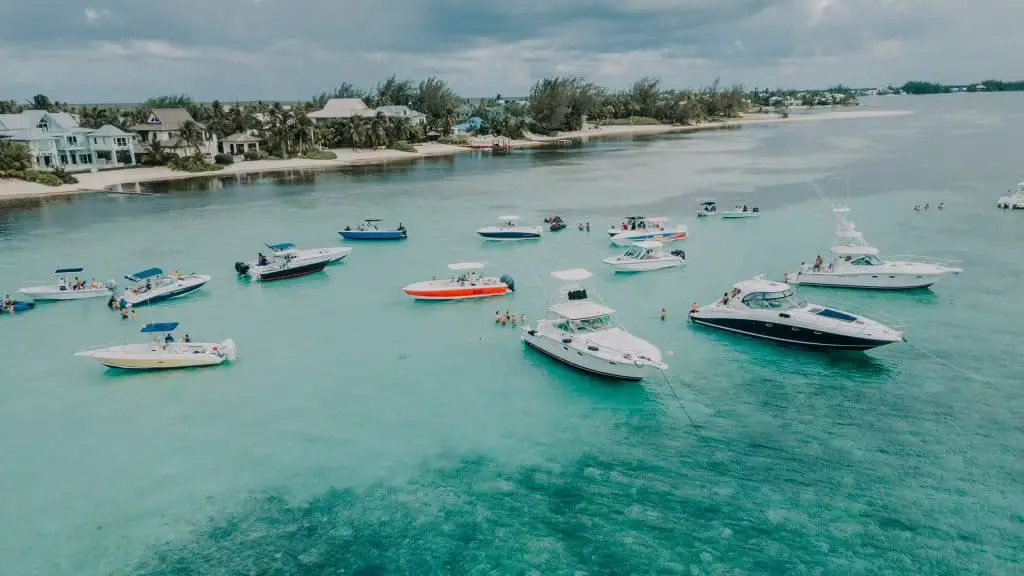
What to Wear to a Yacht Party: Business or Leisure

Why Racing Sailing Yachts Opt for Black Sails: An Insider’s Guide
Racing sailing yachts are often seen with black sails, which can be a striking and intimidating sight for onlookers. But why do these boats use black sails, and what advantages do they offer?
One reason for the use of black sails is to reduce glare and improve visibility for the crew. White sails can reflect sunlight and create a glare that makes it difficult to see the course ahead, especially in bright conditions. Black sails absorb light and reduce glare, making it easier for sailors to spot obstacles and make quick decisions.
Another advantage of black sails is their ability to absorb heat and transfer it to the sailcloth, which can help to create more lift and speed. This is particularly useful in light wind conditions, where the extra boost can make a significant difference. Additionally, black sails can be made from materials that are more durable and resistant to UV damage, which can extend their lifespan and reduce maintenance costs.
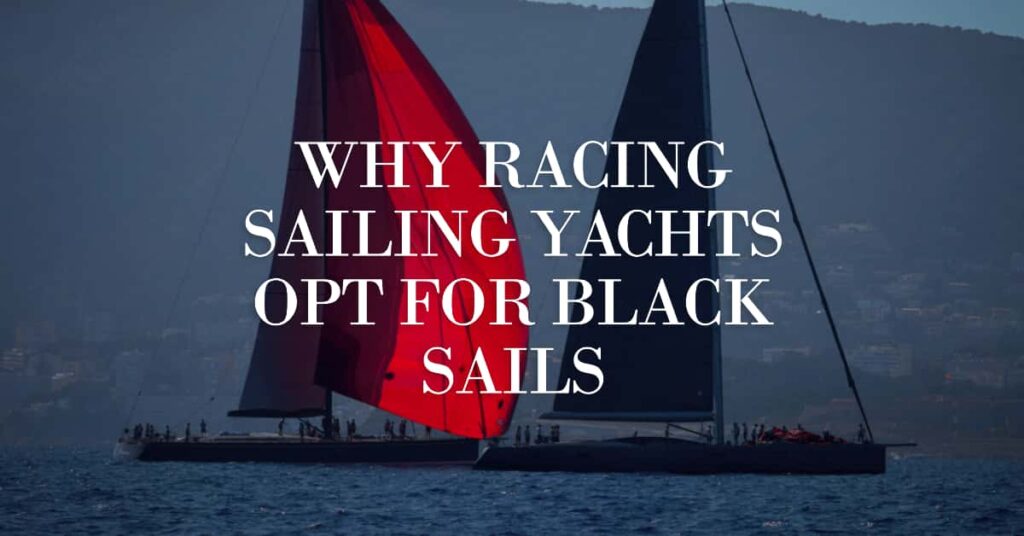
Advantages of Black Sails
Black sails have become a popular choice for racing sailing yachts due to the following advantages:
Black sails give a sleek and modern look to the yacht, which is visually appealing and can attract sponsors and fans. The sails also look good in photographs and videos, which is important for marketing purposes.
Higher Speeds
Black sails absorb more sunlight than white sails, which makes them warmer and increases their efficiency. This can result in higher speeds, especially in light winds. The difference in speed may not be significant, but it can make a difference in a race where every second counts.
UV Protection
Black sails are less likely to fade or get damaged by UV rays than white sails. This is because black sails absorb more light and heat than white sails, which can cause them to break down faster. Black sails made of carbon fibers are especially resistant to UV damage and can last longer than other materials.
Durability and Strength
Black sails are made of strong and durable materials, such as carbon fibers, which can withstand high winds and rough seas. They are also less likely to get dirty or stained than white sails, which can be a problem in long races.
Black sails are usually lighter than white sails, which can make a difference in racing. The weight savings can be used to add other equipment or to improve the yacht’s performance.
Black sails absorb more heat than white sails, which can be a disadvantage in hot weather. The heat can make the yacht’s cabin uncomfortable and can affect the crew’s performance. However, this can be mitigated by using lighter materials or by adding ventilation.
In conclusion, black sails have several advantages over white sails, including a sleek look, higher speeds, UV protection, durability and strength, and weight savings. However, they may not be suitable for all conditions, especially in hot weather.
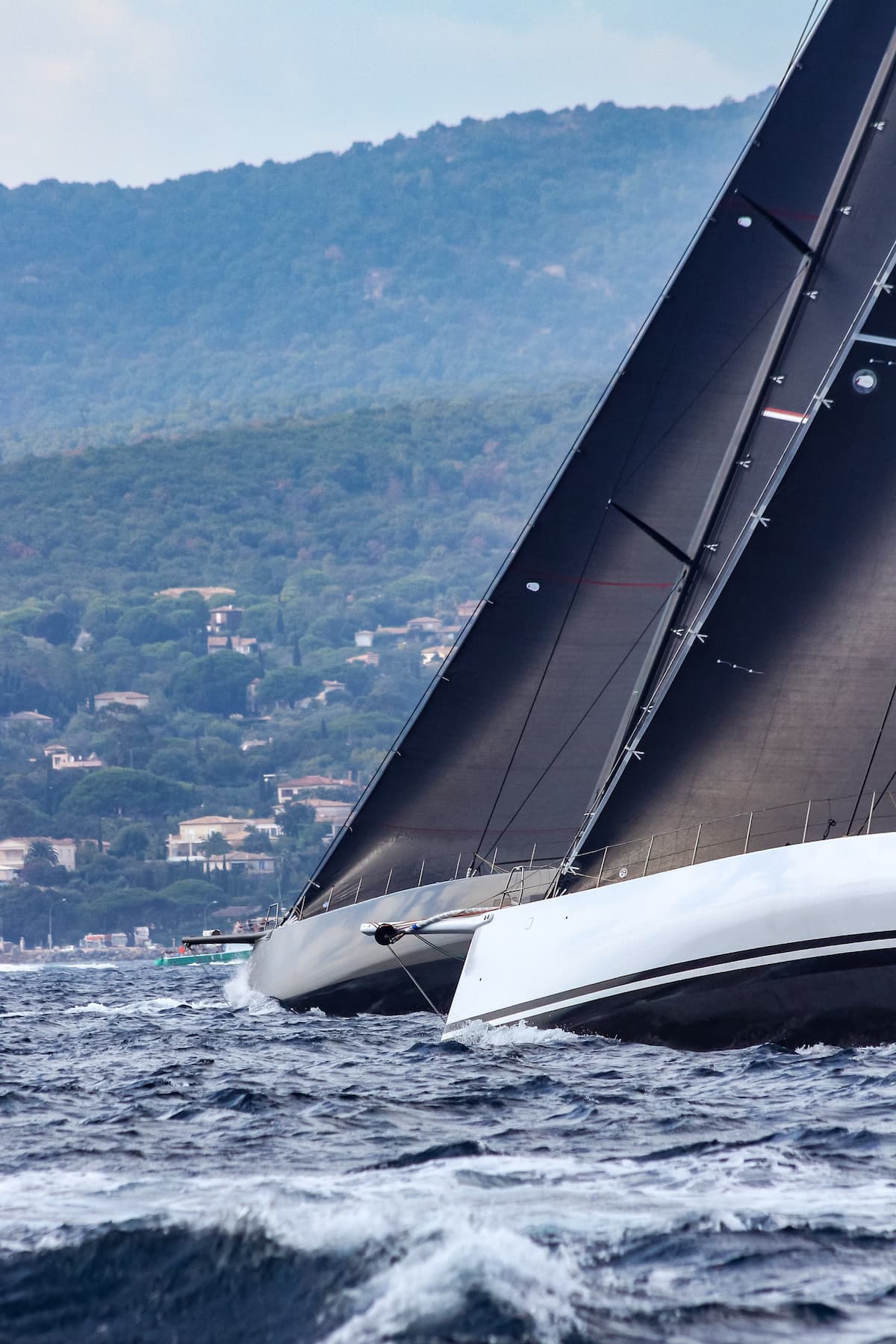
Disadvantages of Black Sails
Black sails may look sleek and stylish, but they do come with some disadvantages that sailors should consider before choosing them for their racing yachts.
One of the main disadvantages of black sails is their cost. They are often more expensive than traditional white sails, as they require special materials and manufacturing processes. This can be a significant investment for sailors, and may not be worth it for those on a tight budget.
Maintenance
Black sails also require more maintenance than white sails. They tend to show dirt and stains more easily, which means they need to be cleaned more frequently. Additionally, black sails can be prone to fading over time, which means they may need to be replaced more frequently than white sails.
Delamination
Another potential issue with black sails is delamination. This occurs when the layers of the sail start to separate, which can weaken the sail and make it less effective. Black sails are more prone to delamination than white sails, which means sailors need to be vigilant about checking for signs of damage.
Black sails are also more susceptible to damage from UV rays. The dark color absorbs more sunlight, which can cause the material to break down more quickly. Sailors need to be careful to store their black sails properly and to protect them from the sun when not in use.
Finally, black sails can be less visible than white sails, especially in low light conditions. This can make it more difficult for other boats and ships to see the racing yacht, which could be dangerous. Sailors need to take extra precautions to ensure their boat is visible to other vessels on the water.
Overall, while black sails may look impressive, they do come with some drawbacks that sailors need to consider before choosing them for their racing yachts.
Material Composition of Black Sails
Black sails are a common sight in racing sailing yachts. They are often made of a combination of materials that provide the necessary strength and durability for the high-performance demands of racing. Here are some of the materials that are commonly used in the composition of black sails:
- Carbon fibers : Carbon fibers are known for their strength and lightness. They are often used in the construction of high-performance sails, including black sails.
- Polyester : Polyester is a common material used in sail construction. It is known for its durability and resistance to UV rays.
- Kevlar : Kevlar is a type of aramid fiber that is known for its strength and resistance to abrasion. It is often used in the construction of racing sails, including black sails.
- Dyneema fibers : Dyneema fibers are also known for their strength and lightness. They are often used in the construction of high-performance sails.
- Taffeta : Taffeta is a type of non-woven surface material that is often used in sail construction. It provides a smooth surface that reduces drag and improves performance.
In addition to these materials, black sails often have an adhesive layer that helps to bond the various layers of material together. This adhesive layer is essential for providing the necessary strength and durability for racing sails.
Overall, the material composition of black sails is carefully chosen to provide the necessary strength, durability, and performance for racing sailing yachts.
Types of Black Sails
There are several types of black sails used in racing sailing yachts. Each type is designed to provide specific benefits to the yacht and its crew. In this section, we will discuss some of the most popular types of black sails.
3Di sails are a type of black sail that is known for its durability, lightweight, and high-performance racing capabilities. These sails are made using helix load shearing technology, which allows them to withstand heavy loads and maintain their shape even in strong winds.
There are two main types of 3Di sails: 3Di Ocean and 3Di Endurance. 3Di Ocean sails are designed for offshore racing and cruising, while 3Di Endurance sails are designed for long-distance racing. Both types of sails are made using the same technology and materials, but they are optimized for different sailing conditions.
One of the key benefits of 3Di sails is their ability to maintain their shape over time. Unlike traditional sails, which can stretch and deform over time, 3Di sails are designed to maintain their shape even after extended use. This means that they provide consistent performance throughout their lifespan.
In addition to their performance benefits, 3Di sails are also environmentally friendly. They are made using recyclable materials and are designed to last longer than traditional sails, which reduces the environmental impact of sail production.
Overall, 3Di sails are a popular choice for racing sailing yachts due to their durability, lightweight, and high-performance capabilities. Whether racing offshore or long-distance, these sails are designed to provide consistent performance and withstand the rigors of racing.
Other Sail Colors
While black sails are commonly used in racing sailing yachts, other sail colors can also be used depending on the purpose and preference of the sailor. Here are some of the other sail colors that are used in sailing:
White Sails
White sails are the most common type of sails used in sailing. They are versatile and can be used in different weather conditions. They are also easy to maintain and repair. White sails are often used in cruising and recreational sailing.
Red sails are not commonly used in sailing, but they can be used for racing or for aesthetic purposes. They are not as versatile as white sails and are best used in specific weather conditions.
Tanbark Sails
Tanbark sails are made from a type of dyed canvas that gives them a reddish-brown color. They are often used in traditional and classic sailing yachts for aesthetic purposes. Tanbark sails are not as durable as modern sails and require more maintenance.
Grey sails are not commonly used in sailing, but they can be used for racing or for aesthetic purposes. They are not as versatile as white sails and are best used in specific weather conditions.
Sail colors can also be influenced by fashion and image. Pirate ships, for example, are often depicted with black sails to create a menacing image. In modern sailing, the choice of sail color can also be influenced by fashion and personal preference.
In conclusion, while black sails are commonly used in racing sailing yachts, there are other sail colors that can be used depending on the purpose and preference of the sailor. White sails are the most common type of sails used in sailing, while red sails, tanbark sails, and grey sails are used for specific purposes. The choice of sail color can also be influenced by fashion and image.
Yacht Racing and Black Sails
Yacht racing is a highly competitive sport that requires the best performance from the boats and the sailors. Many factors can affect the performance of a yacht, including the design, materials , and modifications. One of the most visible modifications that yacht racers use is black sails.
Black sails are not a new concept in yacht racing. They have been used for many years by some of the most successful yacht racers in the world. The reason for this is simple: black sails offer better performance than traditional white sails.
Black sails are made from a different material than white sails. They are made from a high-tech material that is lighter, stronger, and more durable than traditional sailcloth. This material is also more resistant to UV rays, which can cause white sails to degrade over time.
In addition to the material, black sails are also designed differently than white sails. They are cut differently, with a flatter shape that allows them to generate more lift. This increased lift translates into better performance, especially in light wind conditions.
Yacht racers also use black sails because they are more visible on the water. This is especially important in crowded racing conditions, where it can be difficult to see other boats. Black sails stand out against the water and make it easier for sailors to avoid collisions.
Finally, black sails are also easier to maintain than white sails. They do not show dirt or stains as easily, and they do not need to be washed as often. This makes them a popular choice for yacht racers who want to spend more time on the water and less time maintaining their sails.
In conclusion, black sails are a popular choice for yacht racers who want to improve their performance on the water. They offer better lift, increased visibility, and easier maintenance than traditional white sails. While they may not be the right choice for every sailor, they are certainly worth considering for those who want to compete at the highest level of yacht racing.
In conclusion, the use of black sails in racing sailing yachts is not just a fashion statement but has a practical purpose. The black color absorbs more heat than any other color, which helps to warm up the air inside the sail, making it more efficient. The use of black sails is most effective in colder climates where the air is denser and less efficient at powering the sail.
Additionally, black sails are more durable and resistant to UV rays, which can cause damage to the sail over time. This makes black sails a practical choice for racing yachts that are exposed to the sun and wind for extended periods.
However, it is important to note that the use of black sails is not always the best choice. In warmer climates, the heat absorbed by the black sail can cause the air inside to expand, reducing the sail’s efficiency. In these conditions, lighter-colored sails may be more effective.
Overall, the use of black sails in racing sailing yachts is a strategic decision based on the specific conditions of the race and the preferences of the sailors. It is just one of many factors that contribute to the overall performance of the boat and should be carefully considered before making a decision.
- Recent Posts
- Responsibilities of a Fourth Engineer on Cargo Ships – September 10, 2024
- The Role of Cargo Ships in Global Trade – August 22, 2024
- Report: Yang Ming’s YM Mobility Explosion at Ningbo-Zhoushan Port – August 9, 2024
About the author
I worked as an officer in the deck department on various types of vessels, including oil and chemical tankers, LPG carriers, and even reefer and TSHD in the early years. Currently employed as Marine Surveyor carrying cargo, draft, bunker, and warranty survey.
Latest posts

Is Maritime Security Necessary on Modern Ships?
It’s vital for ships to stay vigilant. Isolation from land means having no backup or protection for miles, making them vulnerable to attacks and other threats. Equip modern ships using modern maritime security methods.

Responsibilities of a Fourth Engineer on Cargo Ships
A Fourth Engineer on cargo ships oversees engine room operations, machinery maintenance, and ensures compliance with regulations like MARPOL.

The Quality Control Process in Marine Manufacturing
Companies in the marine manufacturing space must have tight and effective quality control processes. What steps should an effective quality control process include?

Why Do Yachts Have Black Sails? (Revealing the Reasons)
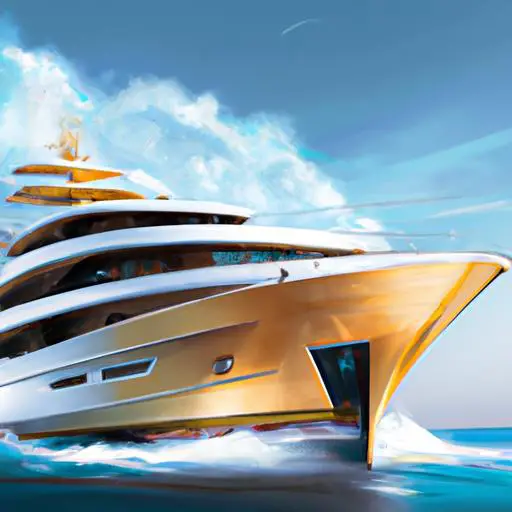
Yachts are known for their sleek designs and luxurious amenities, so it’s no surprise that they often have black sails.
But why is this? What are the advantages of having black sails on a yacht? In this article, we’ll explore the reasons why yachts have black sails, revealing the style factor, sun absorption benefits, cooling effects, glare reduction, low profile advantages, and performance impacts.
We’ll also discuss the different types of black sails available.
Get ready to discover the secrets behind the black sails of yachts!.
Table of Contents
Short Answer
Black sails are popular on yachts for a few reasons.
They help reduce glare from the sun, which can be a hazard when sailing.
Black sails also have a sleek and stylish look, which many yacht owners desire.
Finally, they provide a uniform look when a fleet of yachts is sailing together.
The Style Factor of Black Sails
When it comes to style, black sails are an extremely popular choice for yachts.
Not only do they create a sleek and sophisticated look, but they can also make a yacht stand out from the crowd.
The color black is also associated with luxury, power, and strength, three qualities that are often sought after in a yacht.
Black sails can also help a boat stand out against the horizon, making it easier to spot in crowded waters.
In addition, the dark color of the sails helps to create a strong contrast against the bright blue sea, further highlighting the yachts unique style and grace.
The Sun Absorption Benefits of Black Sails

When it comes to sailing, having the right equipment is essential.
Yachts often feature black sails as a stylish addition that adds a sleek and sophisticated look as well as some practical benefits.
Black sails are popular because they absorb heat from the sun, making it easier to move the boat through the water.
Additionally, the dark color helps to reduce the amount of sun that reaches the deck, keeping the boat and its occupants cool.
The black color also helps to reduce the amount of glare coming off of the sails, making it easier for the crew to navigate and sail the yacht.
The heat absorption benefits of black sails are especially valuable in warmer climates.
The sails act as a kind of sunshade, helping to reduce the amount of sunlight that reaches the deck and the passengers.
This helps to keep the boat and its occupants cool, allowing them to enjoy a comfortable sailing experience.
The dark color also helps to reduce the amount of glare coming off the sails, making it easier for the crew to keep track of their direction and speed.
The combination of these benefits makes black sails an ideal option for sailing yachts .
Not only do they provide a stylish and sophisticated look, but they also help to reduce the amount of sunlight that reaches the deck and the passengers, making for a more comfortable sailing experience.
They also help to reduce the amount of glare coming off the sails, making navigation easier for the crew.
All in all, black sails are a great choice for any yacht, offering style and practicality.
The Cooling of the Boat and Crew
The heat of the sun can make sailing a yacht quite uncomfortable and even dangerous in some cases.
This is why many yacht owners and sailors opt for black sails.
Of all the colors, black absorbs the most heat from the sun and helps keep the boat and its occupants cool.
Additionally, the black color helps to reduce the amount of sun that reaches the deck, further helping to keep the boat and its occupants cool.
Black sails are designed with a special material that is lightweight and breathable, allowing air to pass through while also absorbing the heat from the sun.
This breathability helps to keep the sails from becoming too hot and makes them comfortable to touch.
Additionally, the black color helps to reduce glare that can make it difficult to see and navigate the yacht.
This makes it easier for the crew to navigate and sail the yacht without any distractions or discomfort.
Overall, black sails are an ideal choice for yacht owners looking for a stylish and practical addition to their vessel.
The black color helps to absorb heat from the sun, keeping the boat and its occupants cool and comfortable.
Additionally, the black color helps to reduce the amount of sun that reaches the deck, and the special material used in the sails helps to reduce glare, making it easier for the crew to navigate and sail the yacht.
Reducing Glare from the Sails

Yachts are often equipped with black sails to reduce the amount of glare coming off of them.
The color black absorbs more light than other colors, making it easier for the crew to navigate and sail the yacht without being dazzled by the sun reflecting off of the sails.
The reduced glare also helps to keep the yacht and its occupants cooler, as less of the suns rays will reach the deck.
Additionally, the black color helps to make the yacht look more sophisticated and stylish, giving it a sleek and modern feel.
The black sails on a yacht also offer a few other advantages.
For one, the black sails absorb more heat from the sun, which can help to make the yacht easier to sail.
This is especially helpful in areas with high winds, as the heat from the sails can help to propel the yacht forward.
Additionally, the black sails are less likely to fade over time, meaning that they will keep their color and appearance for longer than sails in other colors.
Finally, black sails are also less likely to attract birds and other wildlife, which can be a nuisance if they land on the sails.
The Advantages of a Low Profile
Yachts featuring black sails can provide a distinct, sophisticated look that can make any vessel stand out from the crowd.
But black sails can also be advantageous for a number of reasons.
One of the most important advantages of having black sails is the reduced profile they provide.
Black sails absorb heat from the sun, which makes the boat easier to move through the water.
Additionally, the black color helps to reduce the amount of sun that reaches the deck, which can help keep the boat and its occupants cool.
Finally, the black sails are designed to reduce the amount of glare that comes off of the sails, making it easier for the crew to navigate and sail the yacht.
The low profile offered by black sails also makes them ideal for sailing in areas with a lot of wind and other weather-related challenges.
This is because the black sails are less likely to catch the wind and create unwanted resistance, allowing the yacht to move more smoothly and efficiently.
Additionally, the low profile of the sails can help to reduce the amount of drag the yacht experiences in the water, further improving the yachts speed and efficiency.
Finally, the low profile offered by black sails also makes them ideal for sailing in areas with a lot of people.
This is because the black sails can help to blend in with the environment, making the yacht less visible to other boats and people on the water.
The lower profile also helps to reduce the amount of glare coming off of the sails, making it easier for the crew to navigate and sail the yacht.
The Impact of Black Sails on Performance

When it comes to sailing, performance is key.
Yachts are built for speed and agility, and the choice of sail color can have a huge impact on their performance.
Black sails absorb more heat from the sun, helping to move the boat through the water faster.
They also reduce the amount of sun that reaches the deck, keeping the boat and its occupants cooler.
Additionally, black sails reduce the amount of glare coming off of the sails, making it easier for the crew to navigate and sail the yacht.
The black color of the sail also has a psychological impact on the crew.
Black sails look sleek and sophisticated, and can give the crew a feeling of confidence and power.
This can help to boost morale and performance, leading to better sailing results.
The black sails also have a practical purpose.
The dark color helps to hide dirt, salt and other stains that can accumulate on the sails over time.
This helps to keep the sails looking better for longer, and can help to maintain the yacht’s value.
By carefully considering the performance, psychological and practical benefits of black sails, it is easy to see why they are such a popular choice for yachts.
Black sails can help to improve the speed and performance of the yacht, boost the morale of the crew, and keep the sails looking better for longer.
The Different Types of Black Sails
When it comes to yachting, black sails are becoming increasingly popular.
Depending on the type of yacht, there are multiple varieties of black sails to choose from.
Some of the most common types are laminated sails, mylar sails, and dacron sails.
Laminated sails are made from multiple layers of fabric that have been bonded together with resin.
These sails are typically lightweight and provide excellent performance on the water.
They are also known for their strength, durability, and resistance to UV light.
Mylar sails are made from a synthetic material that is designed to be lightweight and durable.
These sails provide a sleek look and can withstand higher wind speeds than their laminated counterparts.
Dacron sails are made from a woven material that is extremely strong and durable.
This material is perfect for sailing in high winds, and it also helps to reduce the amount of glare that comes off the sails.
No matter which type of black sail you choose, they all offer the same benefits: they provide a stylish look, reduce the amount of sun that reaches the deck, and also reduce glare.
This makes them the perfect choice for sailing in any conditions.
Final Thoughts
The black sails on yachts offer a unique style factor and provide many practical benefits, such as absorbing heat from the sun, cooling the boat, reducing glare, and providing a low profile.
Understanding the advantages of black sails can help you choose the best type of sail for your yacht, and ultimately improve your performance on the water.
With this knowledge, you’ll be ready to sail with style and confidence!.
James Frami
At the age of 15, he and four other friends from his neighborhood constructed their first boat. He has been sailing for almost 30 years and has a wealth of knowledge that he wants to share with others.
Recent Posts
When Was Banana Boat Song Released? (HISTORICAL INSIGHTS)
The "Banana Boat Song" was released in 1956 by Harry Belafonte. This calypso-style song, also known as "Day-O," became a huge hit and remains popular to this day for its catchy tune and upbeat...
How to Make Banana Boat Smoothie King? (DELICIOUS RECIPE REVEALED)
To make a Banana Boat Smoothie King smoothie at home, start by gathering the ingredients: a ripe banana, peanut butter, chocolate protein powder, almond milk, and ice. Blend the banana, a scoop of...

Why Racing Sailing Yachts Opt for Black Sails
Do you want to know why racing sailing yachts choose black sails?
Well, it’s all about gaining an edge on the water. Black sails offer increased speed, better performance, and enhanced visibility. They also provide protection against harmful UV rays and sun damage.
But there’s more to it than just practicality. The psychological advantage of black sails can’t be underestimated.
So, if you’re seeking freedom and a winning spirit, black sails are the way to go.
Key Takeaways
- Black sails increase yacht speed and performance by absorbing more heat from the sun and generating more wind flow.
- Black sails enhance visibility on the water, making it easier to spot wind shifts and changes in water surface.
- Black sails provide protection against UV rays and sun damage, leading to a longer lifespan and less maintenance.
- The psychological advantage of black sails includes symbolizing rebellion, creating a sense of power, and instilling fear in competitors’ minds.
Table of Contents
The Science Behind Black Sails
You should learn about the science behind black sails and how they improve racing performance. Black sails may seem like a mere aesthetic choice, but there’s actually a lot more to it than meets the eye. The color black has unique properties that make it ideal for racing yachts.
One of the main reasons why black sails are preferred in racing is because they absorb more heat from the sun. This may seem counterintuitive, as we often associate black with heat absorption, but in the case of sailing, it works to your advantage. The extra heat absorbed by the sails helps to generate more wind flow, which in turn increases the speed of the yacht. So, by choosing black sails, you’re maximizing the potential power of the wind to propel your boat forward.
Additionally, black sails also have a lower reflectivity compared to lighter colored sails. This means that they absorb less light and reflect less of it back into the atmosphere. As a result, black sails create less disturbance in the air flow around the yacht, reducing drag and allowing for smoother sailing.
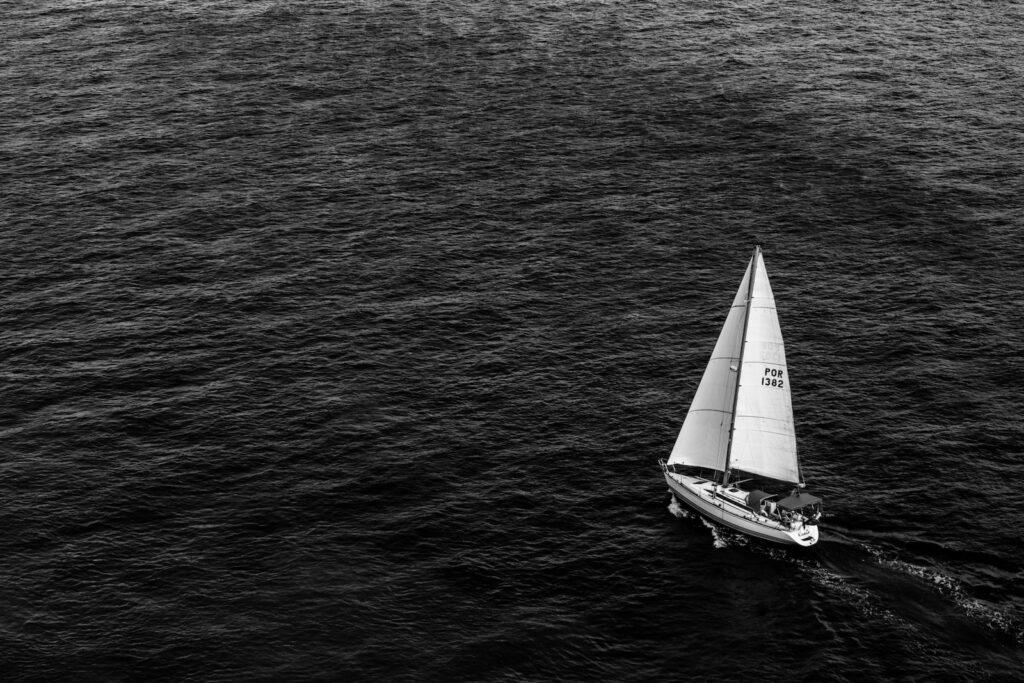
Increased Speed and Performance
Optimize your racing yacht’s speed and performance by understanding the benefits of increased speed and efficiency.
When it comes to sailing, speed is everything. It’s the rush of the wind, the thrill of the chase, and the freedom of the open water. But how can you make your racing yacht go faster and perform better?
Increasing speed and efficiency on your racing yacht has numerous advantages. First and foremost, it allows you to leave your competitors in the dust. Imagine gliding past them effortlessly, the wind in your hair, and the exhilaration of being ahead. Increased speed also means better maneuverability, giving you the ability to navigate tight turns and tricky sailing conditions with ease. It allows you to take advantage of wind shifts, outsmart your opponents, and ultimately, come out on top.
Efficiency is another crucial aspect to consider. By optimizing your yacht’s efficiency, you can reduce drag and resistance, allowing for smoother and faster sailing. This means less effort and energy required to maintain your speed, giving you the freedom to focus on tactics and strategy. It also means reducing fuel consumption and environmental impact, making you a steward of the seas.
Enhanced Visibility on the Water
Having enhanced visibility on the water is crucial for the safety and success of every racing sailor. When you’re out on the open ocean, freedom is what you crave, and being able to see clearly is essential. That’s why many racing sailing yachts have opted for black sails.
Yes, black sails may seem unconventional, but they offer distinct advantages that can give you the edge you need.
The primary reason why black sails are favored is their ability to absorb light. Unlike lighter-colored sails that reflect light, black sails absorb it, making it easier for you to spot wind shifts and changes in the water’s surface. This enhanced visibility allows you to make quick and accurate decisions, helping you navigate through challenging conditions with ease.
Furthermore, black sails can also create a visual contrast against the sky, making it easier for other sailors and race officials to see you. This is especially important during crowded regattas or when sailing in low-light conditions. The boldness of black sails ensures that you stand out and are easily noticed, increasing your safety and reducing the risk of collisions.
Protection Against UV Rays and Sun Damage
When racing sailing yachts opt for black sails, they provide an added layer of protection against UV rays and sun damage. The choice of black sails isn’t just for aesthetic purposes, but also for practical reasons. Black sails absorb more sunlight, which helps to keep the sails warmer and drier, preventing the growth of mold or mildew.
The UV rays from the sun can be harmful to both the sails and the crew on board. Black sails have the ability to block a significant amount of these rays, reducing the risk of sunburn and other skin damage. Additionally, the black color helps to prevent the sails from fading or deteriorating due to prolonged exposure to the sun.
By opting for black sails, racing sailing yachts ensure that their sails have a longer lifespan and require less maintenance. This not only saves time and money but also allows the crew to focus on their ultimate goal: the freedom of sailing the open waters and competing in thrilling races.
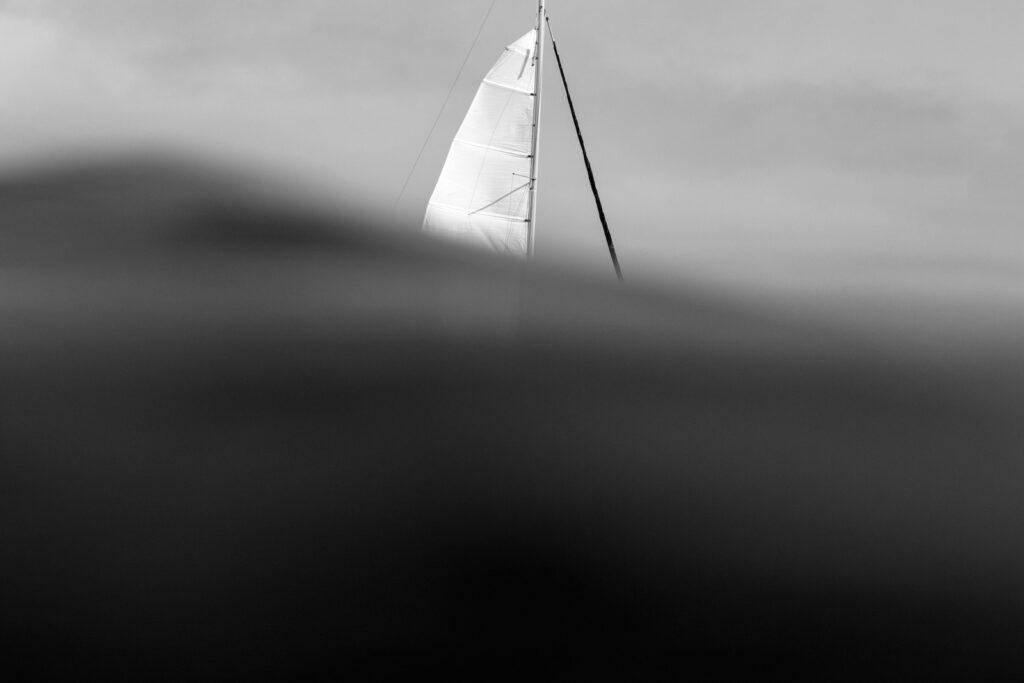
The Psychological Advantage of Black Sails
Now that we’ve discussed the practical benefits of black sails, let’s explore the psychological advantage they provide to racing sailing yachts.
Imagine yourself on a racing yacht, gliding through the open waters, the wind in your hair, and the adrenaline pumping through your veins. The sight of those sleek, black sails billowing in the wind creates a sense of power and dominance. It symbolizes rebellion against the conventional white sails and signifies a desire for freedom and individuality.
The psychological advantage of black sails goes beyond aesthetics. When your competitors see those black sails on the horizon, it sends a clear message: you mean business. It instills fear and uncertainty in their minds, making them question their own abilities. The boldness and uniqueness of black sails can even intimidate your opponents, giving you a psychological edge on the racecourse.
Furthermore, black sails have a stealthy quality. They blend in with the darkness of the night, making it harder for other yachts to track your movements. This creates an element of surprise and unpredictability, allowing you to strategize and execute maneuvers without being easily detected.
In a world where conformity is the norm, choosing black sails for your racing yacht is a statement of defiance. It represents the rebellious spirit that fuels your passion for sailing and sets you apart from the rest.
So, now you know why racing sailing yachts opt for black sails.
The science behind it reveals that black sails not only increase speed and performance but also provide enhanced visibility on the water.
Additionally, they offer protection against UV rays and sun damage.
And let’s not forget the psychological advantage black sails give to racers.
So, next time you see a racing yacht with black sails, you’ll understand why they chose them.
Related posts:
Leave a Reply Cancel reply
Your email address will not be published. Required fields are marked *
Save my name, email, and website in this browser for the next time I comment.

Why Do Racing Yachts Have Black Sails?
Black sails are becoming increasingly popular due to their durability and aesthetic appeal. They are made with carbon fibers, the strongest load-carrying material in sails, which offer UV resistance and protection against sun damage. These sails are not just for aesthetic reasons but also represent sleekness, fashion, and eye-catching.
Black sails are used in racing yachts because they absorb heat, reduce glare, and provide a more durable appearance. The carbon filaments glued together provide strength to sustain the long journey, while black sails protect the sails from harmful UV rays, making them more durable. Some laminate sails are black due to being manufactured with carbon fibers or black-pigmented aramid fibers, while others have a black taffeta to make the sail appear black.
The reason for using black colored Gennakers is simple: Black Gennakers are faster. North Sails is one of the few yachts that use black sails, as most others only use black to follow the leader without providing any benefits to the client. Black was a likely candidate to become the in-style sail color du jour because it has the power to provoke a Pavlovian response among sailors.
Black sails are lightweight and durable, as they absorb more sunlight than lighter colors, making them better able to retain heat when sailing in colder climates. This makes it easier to design a sail with the most efficient shape and perform best. Now, entire fleets, both one design and handicap, have all-black sails.
In conclusion, black sails are now the choice for many yachts due to their durability, aesthetic appeal, and performance benefits.
📹 Why do sailboats have black sails?
Vikings Worth Watching • Why do sailboats have black sails? ———- Our mission is to create educational content. Therefore, we …

📹 39.95m Wally BLACK SAILS racing #Shorts
Epic race 39.95m Wally Black Sails and @hassenstambouli Winner? By @hassenstambouli #blacklegend #blacksails …

Related Articles:
- Why Are Racing Yacht Sails Black?
- Why Do Some Yachts Have Black Sails?
- Why Are Maxi Yachts Sails Black?
- Who Owns The Black Pearl Racing Yacht?
- Why Do Sailing Boats Have Black Sails?
- Why Are Yacht Sails Black In Sydney To Hobart?

Debbie Green
I am a school teacher who was bitten by the travel bug many decades ago. My husband Billy has come along for the ride and now shares my dream to travel the world with our three children.The kids Pollyanna, 13, Cooper, 12 and Tommy 9 are in love with plane trips (thank goodness) and discovering new places, experiences and of course Disneyland.
You may also like

Why Cant I Steer My Cruise Missle?

Why Are Cruise Ships Registered In Nassau?

Why Be A Sailing Instructor?

Why Do Cruise Ships Sail From Whittier?

Why Did Yeats Write Sailing To Byzantium?

Why Water Gets In My Jet Ski?
Add comment, cancel reply.
Your email address will not be published. Required fields are marked *
Save my name, email, and website in this browser for the next time I comment.
Recent Posts

Where Do Cruise Ships Dock In Cannes France?

When Does Below Deck Sailing Yacht Premiere?

How Far Is Kodiak Island From Ketchican Cruise Port?
Latest comments.
- tananam9782 on Do It Now Kayak Review?
- desertbluecatnm on How Long From San Juan Cruise Port To Airport?
- pabarrett on When Should You Wear A Harness Wwhen Sailing?
- raybonecrusher4516 on Where Is Sailing Yacht A Right Now?
- geirmyrvagnes8718 on Where Is Sailing Uma Today?
Tip of the day!

Is The Scillonian Sailing Tomorrow?
No products in the cart.
Sailing Ellidah is supported by our readers. Buying through our links may earn us an affiliate commission at no extra cost to you.
The Reason Behind Different Sail Colors
The color of a sail is normally the result of the type of fiber used in the manufacturing process. Some types of sailcloth can also be colored or painted to achieve the desired appearance.
Sails have been a normal sight since the early days of sailing ships cruising the seven seas. It was common to see red sails on the old Viking ships and the Chinese Junk rigs, but white or yellow sails were the most dominant color back then.
Nowadays, we mostly see white sails around us, except for those on racing boats. But other colors are becoming more apparent as previously exotic materials have become more available to everyone.
To truly understand the reason behind the different sail colors, we need to go back through history to learn how it has impacted our modern trends.
Historical sailcloth and how it was colored
There was a reason for the colorful sails back in the old days. While the Vikings wove and colored their sails from wool until the 14th century, Linen eventually became the preferred material in the Western world.
Linen was used until the 19th century but was a heavy fabric to use as sails grew. They started implementing cotton, which later became more popular since it made the sails lighter. However, it didn’t replace Linen because of its higher strength, and the two fabrics were continuously used for different purposes.
Wool, Linen, and Cotton were often sealed with a composition of tar for protection, which often resulted in sails appearing yellow or brown. Ochre or silk was sometimes added to the mix to color the sails differently.
In the late 20th century, synthetic fibers were introduced and have since been used up until now. Polyester woven fabric, or Dacron as trademarked by DuPont, was introduced in the 1950s and was far superior to Linen and Cotton. As a result, it was pretty much the only reliable fabric used in sails up until around 1980.
The history of laminate sails and their colors
An inventor, textile engineer, and local sailing legend called Russ was playing around with Mylar panels sometime back in the 1940s and 50s. He made a template of wood with the shape of a mainsail and glued together the Mylar panels to form a sail for his dinghy.
The prototype worked well, showed no signs of stretch under sail, and kept its shape perfectly. It did have a big drawback, though. Since Mylar is transparent, Russ suffers from the glaring sun magnified through the sail, and he can only endure it for short moments at a time.
Little did he know that he might be the founding father of what later became sailing laminates. Later on, others took over his work and eventually managed to glue Dacron and Mylar together, making the first known laminate sail. In the 1977 America’s Cup, the racing team onboard Enterprise sported a Genoa reinforced by Mylar, making them the first racing boat using a laminate sail.
This was just the beginning of what eventually became the industry standard.
Back in the early 1970s, there was high demand for more stretch-resistant sail cloth, especially in the racing industry, and the companies in the business started experimenting with laminates.
Many attempts with various fibers failed in the beginning due to unreliability, but by the 1980s, the manufacturers were on track with their developments.
In 1992, again during America’s Cup, America3 was the first boat to fly North Sails’ 3DL laminate. It had taken them three years and $12 million to develop the technology which would later dominate sailboat racing. The original sails were almost transparent like Russ’s sail, but North’s eventually changed the color to dark grey.
Ten years later, North introduced the 3Di sails in matt black, and most other manufacturers followed the trend.
Some related and frequently asked questions
Why are sails black.
Some laminate sails are black due to being manufactured with carbon fibers or black-pigmented aramid fibers. Others have a black taffeta to make the sail appear black.
Carbon is exceptionally strong and lightweight and gives the sail excellent performance. Since most racing boats these days have followed North Sails’ example with black sails, it has become a popular trend and a symbol of speed .
Carbon sails don’t have to be black, but they sure look awesome and trendy!
Why are sails yellow?
Laminate sails can appear yellow or golden when constructed with yellow aramid fibers such as Kevlar®, Twaron®, or Technora® with a light-colored taffeta on top.
Carbon fibered laminate sails have a high price tag, but there are many cruising laminates at a reasonable price, and they have become more regular in the leisure market in the last few years.
Why are sails white?
Today’s most commonly used sails are white because they are manufactured using a fabric called Dacron, made by spinning naturally white polyester fibers into a yarn and then woven into cloth.
Technology has advanced over the years, and many stronger woven fabrics are available today, like the Hydra Net weaved with Dyneema. However, Dacron sails are still the most popular choice today due to their extreme durability and relatively low price.
The benefits of white sails
- It is easier to see the telltales and shapes on a white sail at night.
- A powerful torch can light up a white sail like a giant lamp, making it easy for anyone nearby to see you in case you want to make yourself visible.
- White sails are cheaper to buy than colored sails. Some sailmakers can deliver sails in various colors, but they usually keep the stock in the fabric’s natural shade. Making a special order can get pricey.
- It looks great and traditional to fly bright white sails, just like the ships in the old days. Others might not agree, but I think a white sail carries some symbolism and can, in a way, honor our ancestors’ sailors.
The d rawbacks of white sails
- Dirt and mold show quickly and don’t look good. You should clean and service your sails, of course, but at some point, those stains will stick.
- Color degradation happens over time, and the sails will look yellowish with age. I can testify to discolored old sails as I recently replaced my Mainsail and Genoa and was almost blinded by how bright the new ones were.
- Bright white can get blinding in the sun. Wearing sunglasses makes a short process of the problem, though, and I think the benefits of a white sail outweigh the downsides.
Why are some sails colorful?
Light-wind sails, such as spinnakers, often get seen in many combinations of colors. These sails are usually made of nylon due to the fabric’s low weight and high tensile strength. Since nylon is easily dyed, you often get to choose from various patterns and colors when you order them.
My gennaker, a.k.a. “Big Red,” is…well, red. And it looks awesome!
Others even take it a step further and have their logo printed on the sail, which I think looks excellent. Seeing the big, colorful ballooners fly in front of the boat on a sweet downwind sail will probably bring out smiles in most of us.
How long do sails last?
Sails can last anything from 2-20 years, depending on the type of sail, sailcloth used, and how well it is cared for. Laminate sails usually have the shortest lifespan, while dacron and hybrid cloth last a good while longer.
How long your sail will last depends on what type of sail you choose. What type of sail you choose depends on what you want to use the sails for, and so on. I actually wrote an article about the expected lifespan of sails and included some ways to make them last longer!
The Expected Lifespan Of Sails And 8 Tips To Make Them Last Longer

Final words
Whether you prefer white, black, or colorful sails, you will find something that suits you. Maybe you are like me, who likes traditional white over trendy black, or perhaps you want to chip in a few extra bucks and get yourself sails in blue.
History has taught us a lot about sails. Not just in the sense of technology development but also in the way the most extreme sailors in the business have influenced the trends.
What type of sail do you prefer, and in what color? Leave your comment below !
Sources: Wikipedia , North Sails , Scuttlebutt , Afloat , Boat Design , itBoat
Sharing is caring!
Skipper, Electrician and ROV Pilot
Robin is the founder and owner of Sailing Ellidah and has been living on his sailboat since 2019. He is currently on a journey to sail around the world and is passionate about writing his story and helpful content to inspire others who share his interest in sailing.
Leave a Reply Cancel reply
Your email address will not be published. Required fields are marked *

- AMERICA'S CUP
- CLASSIFIEDS
- NEWSLETTERS
- SUBMIT NEWS
Set Sail on Wakaki, Jump Onboard with North Sails, Why Are Racing Sails Black? Join Our Webinars

| |||||||||||||||||||||||||||||||||||||||||||||||||||||||||||||||||||||||||||||||||||||||||||||||||||||||||||||||||||||||||||||||||||||||||||||||||||||||||||||||||||||||||||||||||||||||||||||||||||||||||||||||||||||||||||||||||||||||||||||||||||||||||||||||||||||||||||||||||||||||||||||||||||||||||||||||||||||||||||||||||||||||||||||||||||||||||||||||||||||||||||||||||||||||||||||||||||||||||||||||||||||||||||||||||||||||||||||||||||||||||||||||||||||||||||||||||||||||||||||||||||
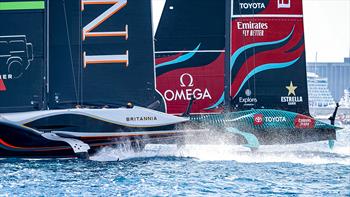





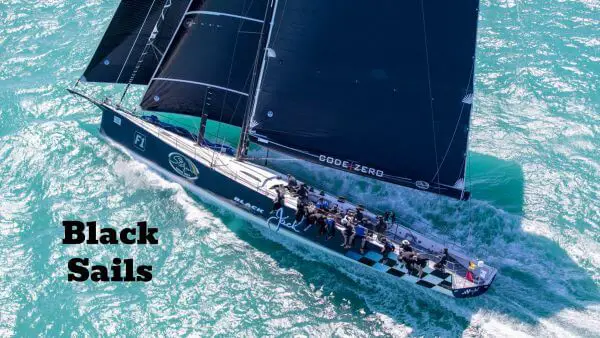
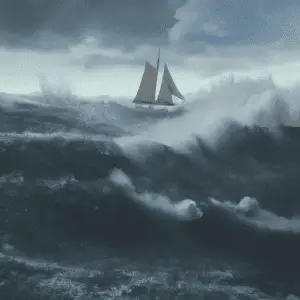

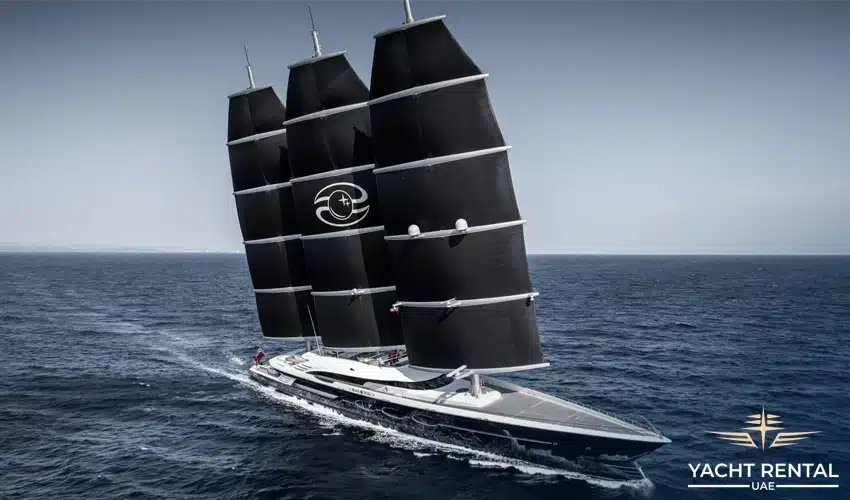



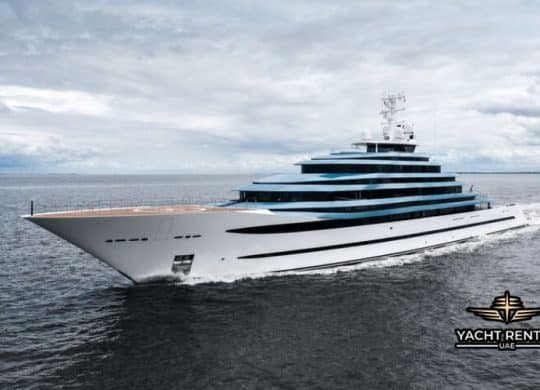
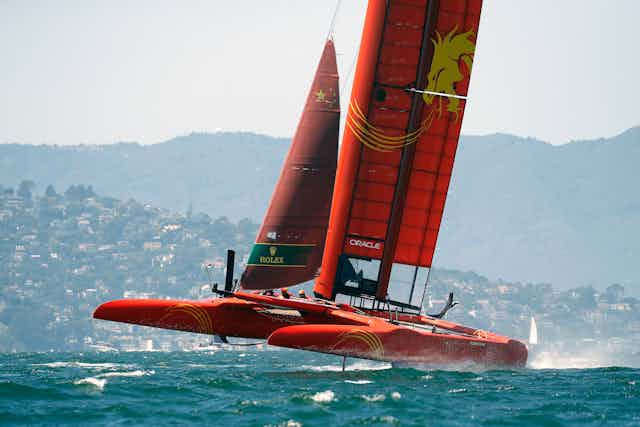
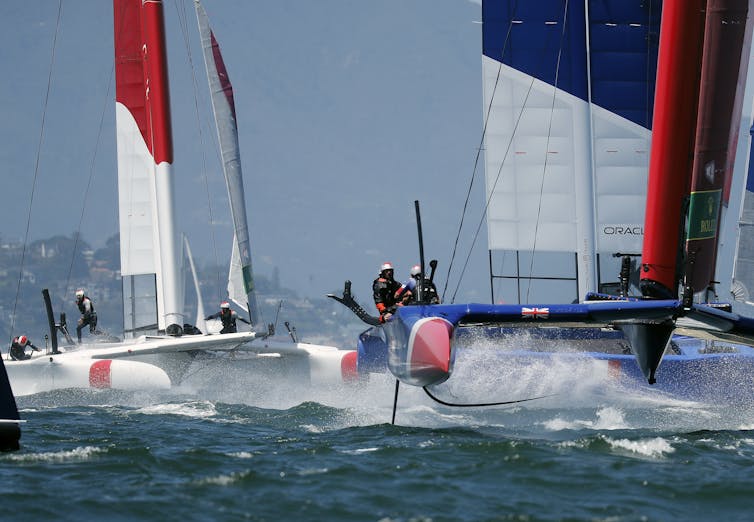

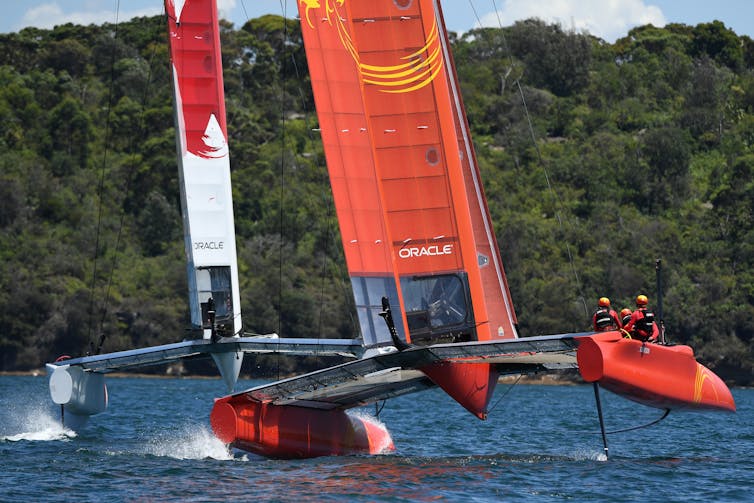






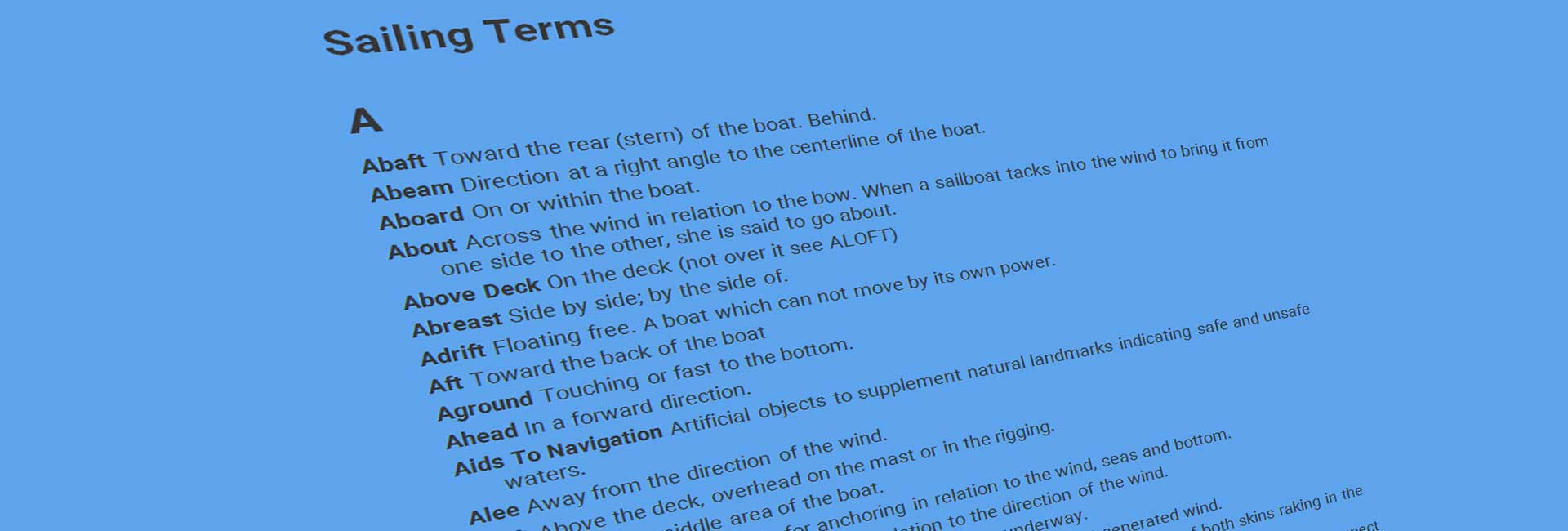





































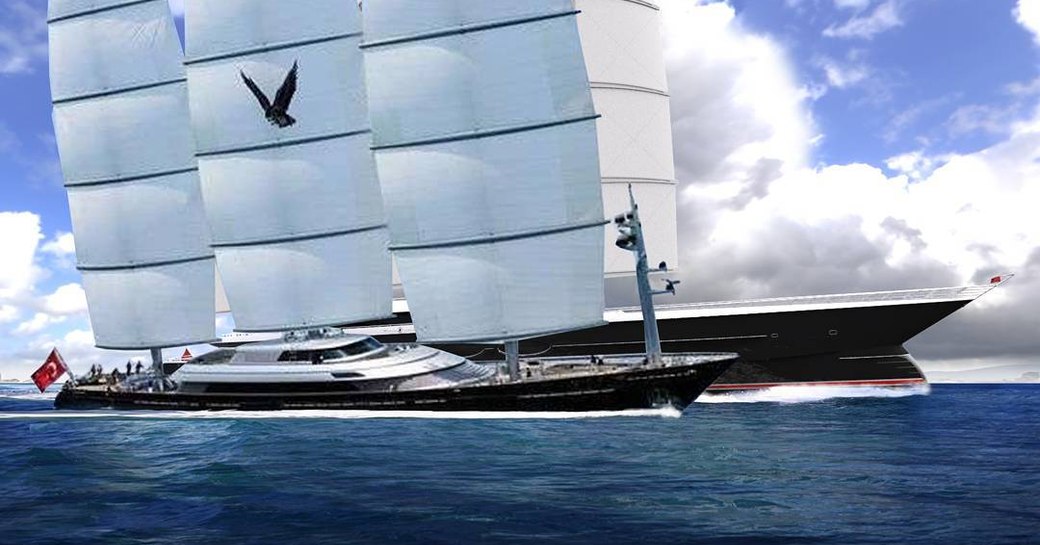
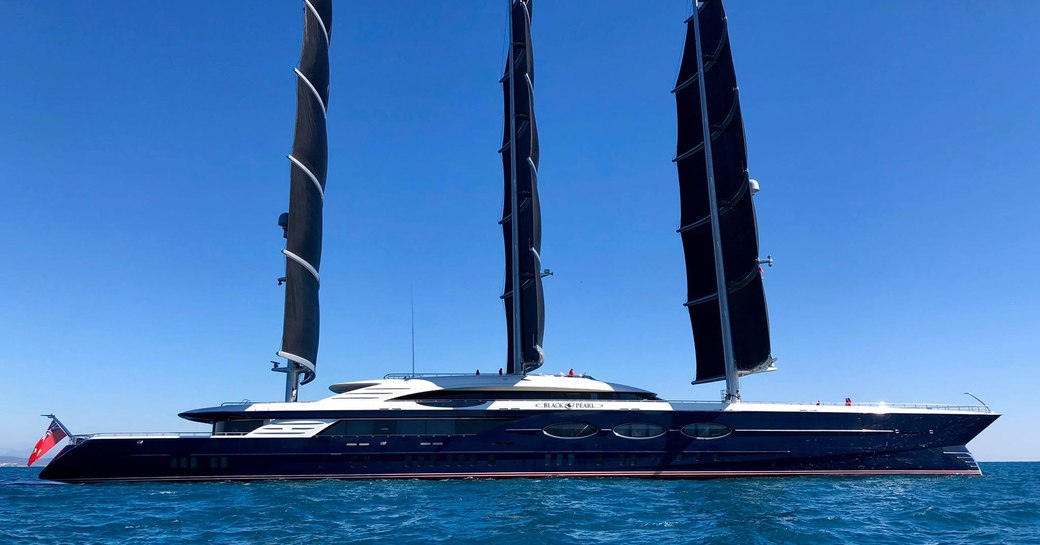

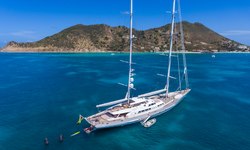
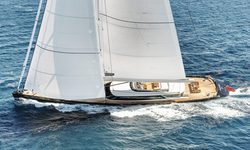
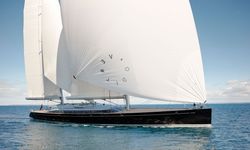
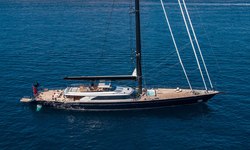
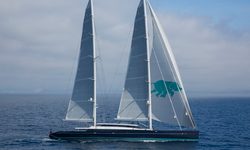

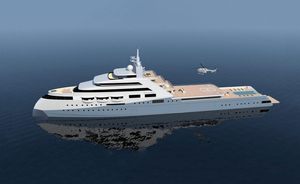

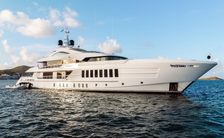

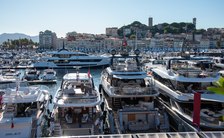
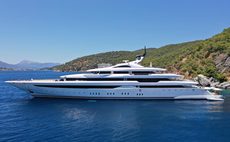


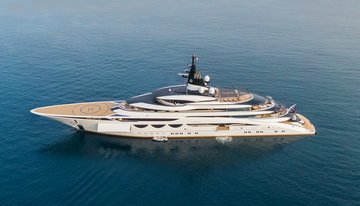
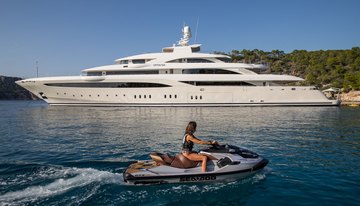
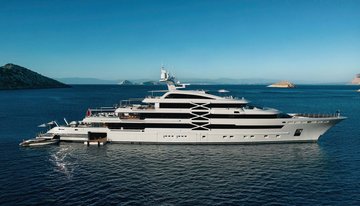
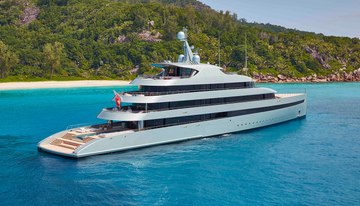

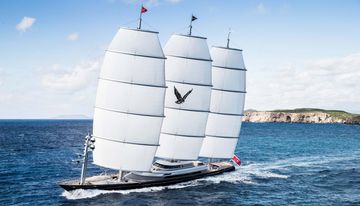
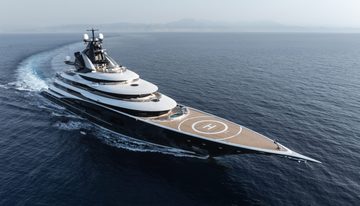
IMAGES
VIDEO
COMMENTS
Others simply add a non-woven layer of colored polyester material to make the sails black. North Sails 3D molded downwind racing sails are grayer and more translucent, especially when the sun is behind the sail. These sails come with our Helix load shearing technology luff structure. The 3Di molded downwind sails use. North Sails Expert Per ...
The black color has become strongly associated with performance sails. It's kind of like the marker of a quality sail. Yacht owners and even regular boat enthusiasts know that a black sail is the standard of top performance because it's made from premium materials. That said, changing the color might distance the product from that image.
Yacht Racing and Black Sails. Yacht racing is a highly competitive sport that requires the best performance from the boats and the sailors. Many factors can affect the performance of a yacht, including the design, materials, and modifications. One of the most visible modifications that yacht racers use is black sails. Black sails are not a new ...
Short Answer. Black sails are popular on yachts for a few reasons. They help reduce glare from the sun, which can be a hazard when sailing. Black sails also have a sleek and stylish look, which many yacht owners desire. Finally, they provide a uniform look when a fleet of yachts is sailing together.
North Sails Expert Per Andersson explores fashion and function in the striking look of black sails on the water, and explains why sails may come in different shades of black. Skip to text Save On New Sails - Trade In.
Black sails may seem like a mere aesthetic choice, but there's actually a lot more to it than meets the eye. The color black has unique properties that make it ideal for racing yachts. One of the main reasons why black sails are preferred in racing is because they absorb more heat from the sun.
Reasons why yachts have black sails. ... -edge boats of today where modern aluminum masts or lightweight carbon fiber spars are standard equipment in most racing yachts. The use of carbon fibers in sail-making makes it essential for boat enthusiasts to seek better performance through advanced technology as it can sometimes cause price surges ...
Black sails are used in racing yachts because they absorb heat, reduce glare, and provide a more durable appearance. The carbon filaments glued together provide strength to sustain the long journey, while black sails protect the sails from harmful UV rays, making them more durable. Some laminate sails are black due to being manufactured with ...
Others have a black taffeta to make the sail appear black. Carbon is exceptionally strong and lightweight and gives the sail excellent performance. Since most racing boats these days have followed North Sails' example with black sails, it has become a popular trend and a symbol of speed. Carbon sails don't have to be black, but they sure ...
Why Are Racing Sails Black? Good question. Fashion, function and material composition all play a part. Per Andersson explains why we have seen a shift to black sails on the race course. Learn More . Gain confidence in cruising and plan your next adventure with North Sails. Learn More: Download your North Sails Zoom Background today for a change ...
Sail4beer said: I think it depends on the type of boat. I bought 9 1/2 oz Dacron from Vermont Sailing Partners for my cruiser to keep the traditional look. I had black sails made for my Ensign Turbo project last year and ordered black sails for my Fareast28R to go with the modern look. For me, it was about the look.
Most likely you'll want your sails to go through a broader range and might take just a light/medium and a medium/heavy. Therefore you might need to consider different structures and different ...
According to Yahoo News UK, "The use of black sails in long-distance racing has become popular in recent years for both practical and tactical reasons." ... Key Takeaway: Reasons why yachts have black sails As an avid sailor, I've always been curious about why some yachts have black sails. After researching the topic, I found that there are ...
The black color yacht sail absorbs heat, reduces glare, and provides a sleek, stylish, and luxurious look. Some people associate black sails with high performance. So, changing the sail color to black may positively affect the yacht's performance. Here are more details about why yacht sails are black and how they affect performance.
The fibers from which sailboat sails are made could include any number of natural or synthetic materials, that can range from cotton, flax, or hemp, to polyester, nylon, and more. Deciding upon the right one usually depends on what type of sailboat you are using or your reason for sailing. The most common material used in sails is also the most ...
To build a faster boat you have to find ways to overcome the drag force. The first mechanism is friction. As the water flows past the hull, a microscopic layer of water is effectively attached to ...
Each British vessel took around 46,000 hours to build, 90,000 hours to design, 75- to 100 thousand hours to CNC machine, and weighs around 6,450 tonnes. The yachts also include 17,300 individual ...
At North Sails, winning sailboat races is built into our DNA. Our hard-won expertise from more than 60 years of success is why North sails power more race wins than any other sailmaker. Innovation and the science of sailmaking drive North Sails. The result is faster sails that deliver superior performance to North customers around the world.
Racing Terms and Phrases for Newer Sailors. The angle between the apparent wind and the chord line of the sail. The direction and speed of the wind as measured from a moving boat. Tacking away from other boats to obtain clear air. Often used for starting situations.
Calling the O Flag the cheating flag is certainly a bit of a misnomer. The O Flag does, however, suspend Rule 42 of the Racing Rules of Sailing. Rule 42 is particularly notorious, as it bans pumping, rocking, ooching, sculling, and excessive maneuvering, all of which are methods to make your boat go substantially faster.
Delivered in 2018, Black Pearl by Oceanco was one such project. Measuring 106m LOA, this visionary design officially takes the title as the second biggest sailing yacht in the world, outstripped only by the 109.5 metre Sea Cloud. There are other bigger yachts with sails, but they are considered to be sail-assisted.
25.1. The notice of race shall be made available to each boat that enters an event before she enters. The sailing instructions shall be made available to each boat before a race begins. 25.2. The meanings of the visual and sound signals stated in Race Signals shall not be changed except under rule 86.1 (b).
Delivered on Friday 16 March, the 107m/350ft sailing yacht 'Black Pearl' from Oceanco arrived in the Mediterranean earlier today. Currently holding the title of world's largest sailing superyaht, Black Pearl looked triumphant as she made her way to the Mediterranean today. The result of a fascinating design phase, Black Pearl began life ...